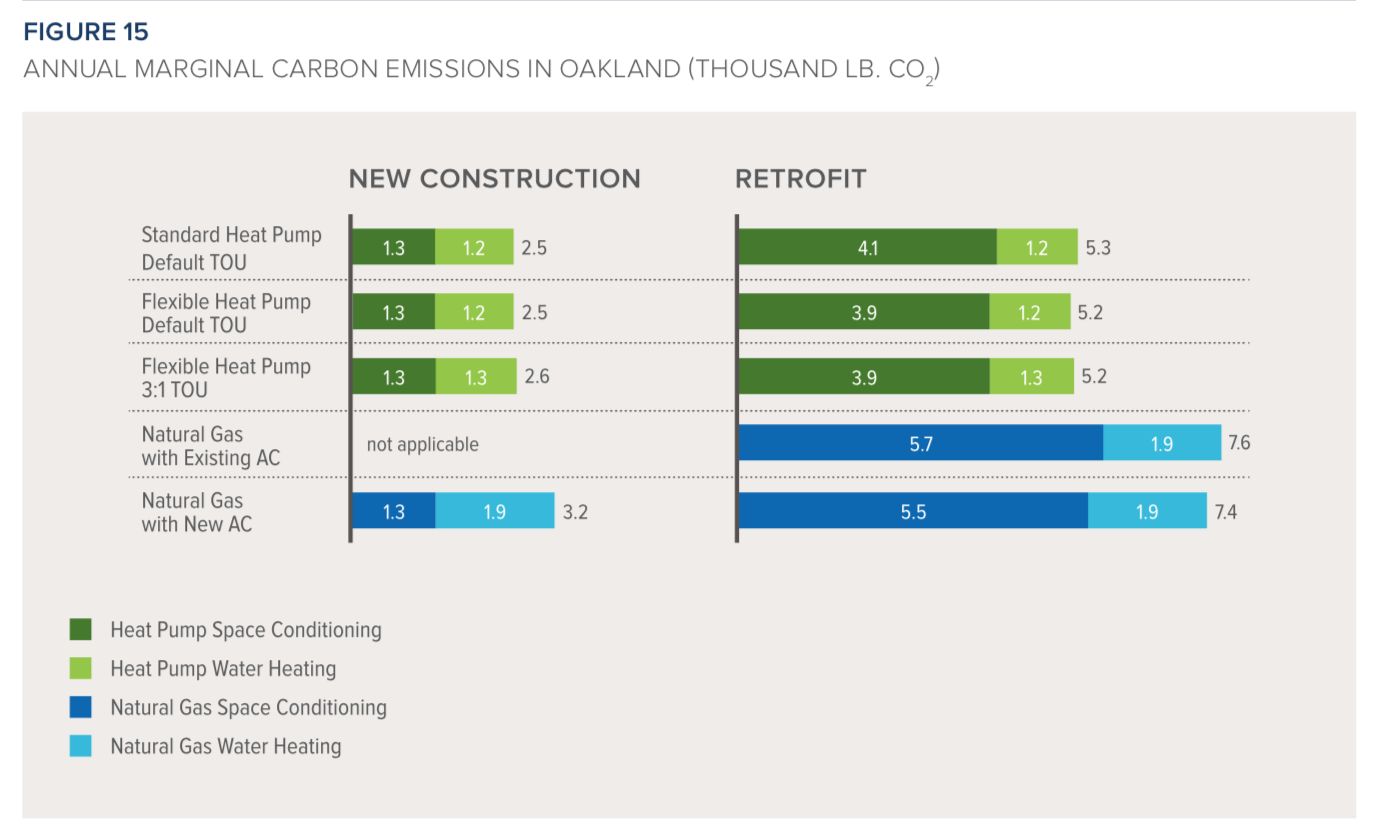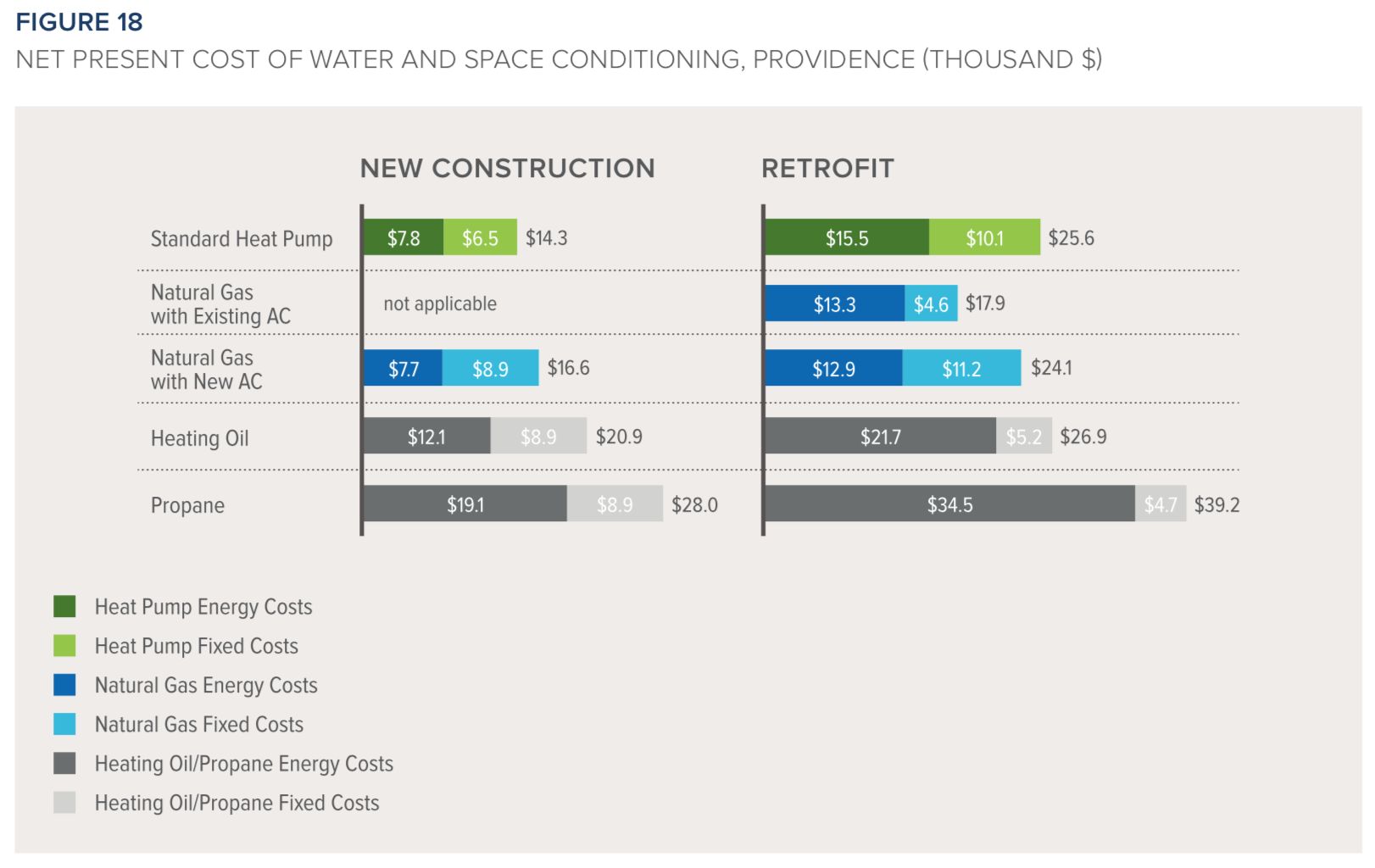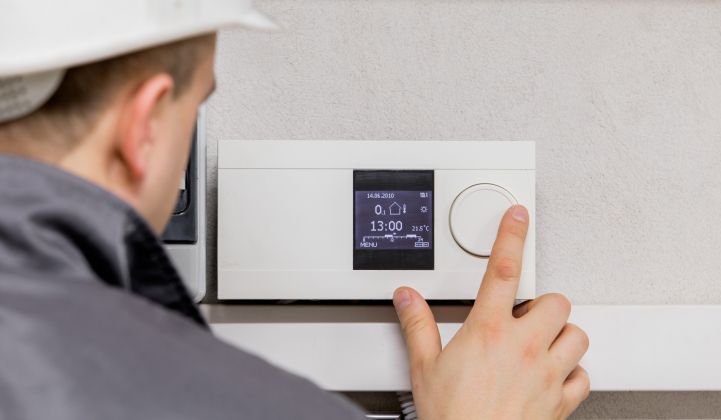Clean energy has been most successful in penetrating power generation. But just moving U.S. generation to cleaner energy resources will have a somewhat minimal effect on greenhouse gases, drawing down just 30 percent of total emissions.
Heating in homes and businesses consumes a tenth of annual U.S. emissions. Seventy million of those buildings use fossil fuels, including natural gas, oil or propane, for heating.
Converting those buildings to more carbon-friendly electric systems — specifically heat pumps that control temperature by drawing air in and out of a building — would support deep decarbonization in most states.
So far, these systems are used in just 12 million U.S. homes, mostly in mild climates like in the Southeast. A new report from the Rocky Mountain Institute (RMI) claims their use could be expanded markedly. The only barrier is cost.
As RMI notes in a new report, The Economics of Electrifying Buildings, “most of the 56 million American households currently heated with natural gas will not find it cost-effective to switch to electric heat pumps at today’s prices.”
Looking at several examples in Oakland, Providence, Chicago and Houston, researchers found that for the 70 million buildings already relying on fossil fuels, heat pumps are generally more expensive than natural-gas heating.
In many new construction cases, though, heat pumps are more cost-effective than other sources.
Because of its mild climate, Oakland, California has the lowest home heating and cooling energy needs of all of the cases. But even with lower consumption, heat pumps can cut carbon emissions by 2,000 pounds of carbon a year in retrofit buildings there.
New heat pumps produce 2.5 thousand pounds of carbon dioxide per year compared to 3.2 thousand pounds for natural gas.
The gap widens for retrofits.
 Source: Rocky Mountain Institute
Source: Rocky Mountain Institute
Emissions reductions from using heat pumps will only rise with the increasing penetration of clean energy on California’s grid, which is set to reach 50 percent by 2030.
Like many of the other cities RMI examined, installing heat pumps in Oakland is more economical than using natural gas in new builds.
 Source: Rocky Mountain Institute
Source: Rocky Mountain Institute
The benefits are more marked when incorporating a time-of-use rate that some California utility customers can opt for. The 3:1 system would rely on preheating or precooling water during off-peak times, reducing lifetime costs by about $1,000. That compares to a modest time-of-use scheme that most Californians will automatically join in 2019, where peak prices are at most 19 percent higher than off-peak prices.
In new buildings, however, natural gas — especially when used with an existing air conditioner unit instead of replacing all equipment — edges out heat pumps because of lower fixed costs. Energy costs are close to equal in both new construction and retrofit conditions.
According to RMI, electrification makes economic sense for houses and buildings moving away from fossil fuels like oil and propane and for those building owners who use gas and need to replace both heating and cooling equipment. That’s especially true because electrification doesn’t require the gas main and meter infrastructure that traditional fuels need.
In Providence, which has high heating and cooling needs and relatively high electricity costs, heat pumps can also be competitive. That’s in part because many areas of New England rely on expensive oil and propane for heating and cooling over natural gas.
 Source: Rocky Mountain Institute
Source: Rocky Mountain Institute
But like in many of the cases, heat pumps beat out natural gas for new buildings, while natural gas wins in retrofitted buildings.
Natural gas has an edge in part because of the inefficiency of the high energy intensity needed to heat older, inefficient Rhode Island homes.
The carbon benefits from heat pumps play a role in Rhode Island as well, with heat pumps easily beating out carbon-intensive oil and propane, as well as natural gas, in both new construction an retrofitted buildings.
Though heat pumps are not quite economical compared to natural gas, the National Renewable Energy Laboratory expects by mid-century that prices will drop 20 to 38 percent for air-source heat pumps and 42 to 48 percent for heat pump water heaters.
 Source: Rocky Mountain Institute
Source: Rocky Mountain Institute
In many instances examined by RMI, heat pumps are already closing in on natural-gas system prices. The organization suggests that as installer familiarity grows, and technological innovations continue, heat pump costs will drop. Time-of-use rates and policy considerations could make the business case even more appealing.
Energy efficiency and building electrification are becoming more ubiquitous at the subnational and even national level. Experts say incorporating less carbon-intensive heating and cooling systems will be required to take a bite out of the 70 percent of U.S. emissions unrelated to power generation — and to reach climate goals of limiting warming to 2 degrees Celsius.




